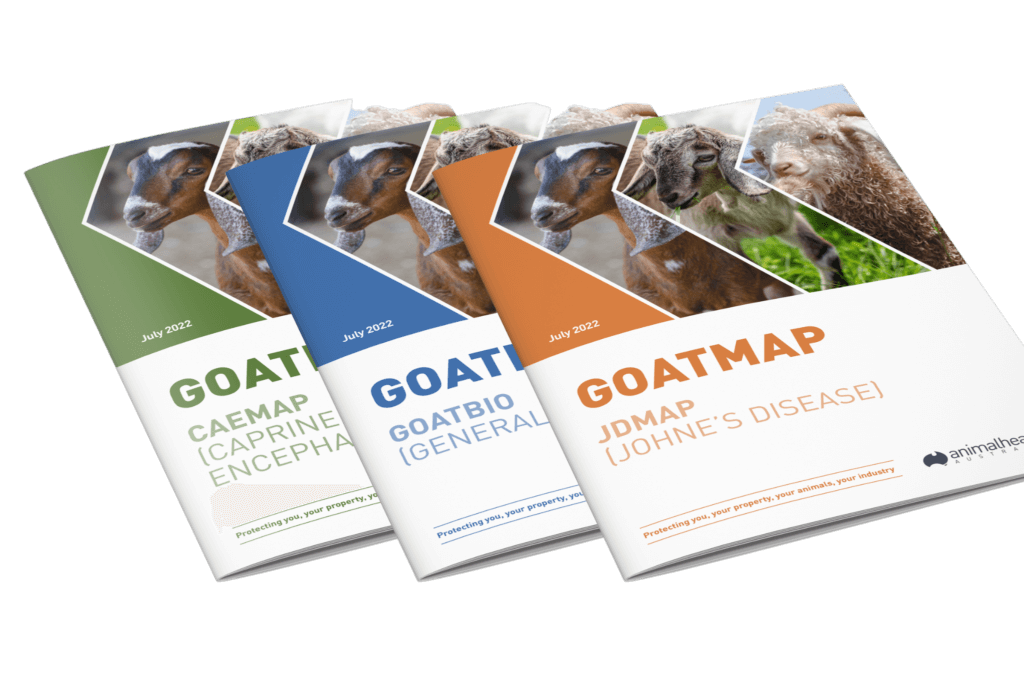After much anticipation, a revamped Market Assurance Program for Goats (GoatMAP) has officially been released. Developed in collaboration with Dr Richard Shephard from Herd Health Pty Ltd and a working group of industry and government representatives, the new program will assist producers in promoting their biosecurity and disease low risk status. The update of GoatMAP follows a review of the program as a result of the previously low participation rates and aims to further involve and support goat producers in the market assurance space.

The review of the manual not only identified that there was value in continuation of the program, but in addition there would be significant benefits in looking at the inclusion of other diseases besides Johne’s disease (JD), which has been its core focus for many years. The newly developed program is made up of three separate modules – GOATBIO, CAEMAP and JDMAP.
GOATBIO describes the basic biosecurity requirements of entry into GOATMAP. As biosecurity is critical to any program like this one, the GOATBIO module has been set up as the baseline module for all participants to undertake. Completion of this module may be done to complement the biosecurity planning that a producer may already be doing for the Livestock Program Assurance (LPA) program, if they are part of it.
Producers may then undertake the one or both of the disease modules, depending on their herd priorities.
Caprine arthritis encephalitis (CAE) has been identified as an industry priority and has been included in the new module CAEMAP. CAEMAP contains background on the condition and offers an organised industry approach to controlling CAE in Australia. This has been helped by the ability to use a new bulk milk test for dairy herds (from research done by the Elizbeth Macarthur Agricultural Institute), which will make the program more affordable for large herds to participate in.
John Falkenhagen, President of GICA, says he is pleased to see the launch of the new GoatMAP and keen to try the CAE module with his own goat herd.
The last module, JDMAP, is the JD component of the previous GoatMAP, although much of the biosecurity from it now sits in GOATBIO. You must attain GOATBIO accreditation before working with your veterinarian on implementing either of the disease modules.
The revamp and development of each module will not only help producers provide buyer assurance, through identification and promotion of their high assurance (low risk) herd status to clients. It helps minimise the spread of these diseases and support long term biosecurity practices.
The new modules, accompanying documents and advice for veterinarians can be found on the Animal Health Australia website here.